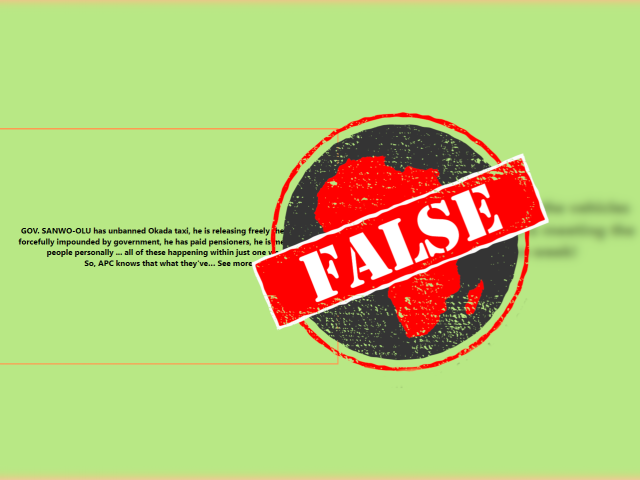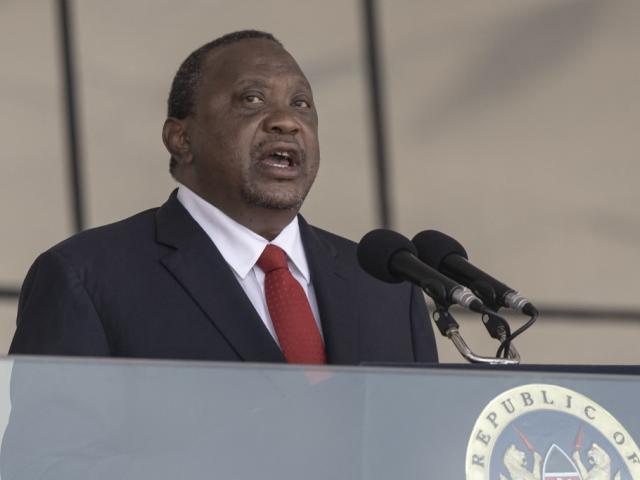-
With Kenya’s August 2022 election only two weeks away, the main contenders have been spiritedly debating their agendas.
-
We looked at 16 claims made during a much-watched debate for running mates of the four presidential candidates.
-
It was a mixed scorecard which included some major bloopers. The state of official data is a concern, with conflicting numbers a regular occurrence.
Ahead of the 9 August general election, Kenya’s four running mates took to the lecterns to promote their agendas in nationally televised debates.
Martha Karua of the Azimio la Umoja coalition squared off with Rigathi Gachagua of the United Democratic Alliance party. 
Karua, a former justice minister, is the running mate of former Kenyan prime minister Raila Odinga, while Gachagua, the member of parliament for Mathira constituency, is the running mate of deputy president William Ruto.
Odinga and Ruto are the perceived frontrunners according to opinion polls.
Two other candidates, Justina Wamae of Roots Party and Ruth Mutua of Agano Party, also debated each other. Wamae and Mutua are the presidential running mates of George Wajackoyah and David Mwaure.
We identified 16 claims made in the debates.
Martha Karua
Kenya does “not have a revenue problem,” Karua said in response to questions from debate moderators about the high cost of living in Kenya “We have an expenditure problem.”
She proceeded to illustrate this. “This year alone we collected over KSh2 trillion,” she said.
Karua’s office told Africa Check she was referring to the 2021/22 financial year, the most recent revenue data released about two weeks before the debate, and not a calendar year.
Kenya’s financial year runs from 1 July to 30 June.
On 7 July 2022 the Kenya Revenue Authority announced it had collected KSh2.03 trillion (about US$17 billion at current rates) in taxes for the 2021/22 financial year. It described the amount as a record high.
|
Total tax revenue collected in last five financial years |
|
|
Financial year |
Amount (KShs trillion) |
|
2017/18 |
1.52 |
|
2018/19 |
1.71 |
|
2019/20 |
1.8 |
|
2020/21 |
1.78 |
|
2021/22 |
2 |
SOURCE: Kenya Economic Survey 2022.
*Figures are rounded up.
We rate the claim correct. —Alphonce Shiundu
Karua promised to curb non-priority expenditure if elected. “The expenditure for operations and maintenance (O&M) is over KSh600 billion,” she said.
The independent office of the controller of budget oversees budget implementation in the country. It categorises operations and maintenance as spending on, among others, domestic and foreign travel, advertising, rent, legal fees and maintenance for motor vehicles and other assets.
The controller of budget has data on both the national government and the 47 county governments. The most recent publicly available annual data is for the 2020/21 financial year.
The data showed spending on operations and maintenance was KSh218.7 billion for the national government and KSh105.9 billion for the counties, adding up to KSh324.6 billion.
The budget office has also published data for the first nine months of the 2021/22 financial year.
This had the national government spending KSh253.6 billion on operations and maintenance. Counties spent KSh73.3 billion, making for a total expenditure of KSh326.9 billion.
As the source of their data, Karua’s office directed us to the national treasury. Her campaign also shared this table showing operations and maintenance expenditure as KSh558.6 billion in the 2020/21 financial year, against a budget of KSh587.4 billion.
Treasury’s most recent figures are in the quarterly economic report published in May 2022. Part of the report shows spending on operations and maintenance exceeded KSh600 billion in 2018/19, and is estimated to have been KSh652 billion in 2020/21. But there’s an “other” line item included in the O&M figures, and it is unclear what this refers to.
We have contacted the treasury seeking clarity. The disparity in figures has also sparked debate on social media. Until we hear back from treasury we rate this claim unproven. –Makinia Juma
Karua said salaries gobble up about KSh550 billion.
The office of the controller of budget publishes data on compensation for all national and county government employees.
The information covers “basic salaries for permanent employees, wages for temporary employees and personal allowances paid as part of salary among other payments to staff”. (Note: Salaries for the army and intelligence services are not included “due to the nature of their operations”.)
In 2020/21, KSh489.1 billion was spent on national government employees, and KSh176 billion on those in the counties. The total is KSh665.1 billion.
The most recent data for a full financial year - 2020/21 - exceeds Karua’s claim by more than KSh100 billion.
The controller of budget also has partial data for the most recent financial year. For the first nine months of 2021/22, pay worked out to KSh368.5 billion for national government employees and KSh139.6 billion for county employees, making for a total of KSh508.1 billion.
Karua’s office shared a table with us that showed salaries and wages in 2020/21 were KSh493 billion. We also found a national treasury report with the same figure. However, the most recent economic survey gave the public sector wage bill at KSh711.7 billion in 2020, and provisionally at KSh760.1 billion in 2021.
We have again asked the national treasury for the best document to use and will update this report with their response. Until then, we rate the claim as unproven.
Karua then said spending on operations and maintenance was higher than the amount spent on employee compensation.
Given the conflicting figures from the national treasury that we have outlined, we rate this claim as unproven pending official clarification.
Rigathi Gachagua
Gachagua said if his side wins elections, the focus would be on fixing the country’s economy. “We are inheriting a KSh9 trillion debt,” he said.
Is the country’s public debt at this level?
In its most recent debt update published in May 2022, the country’s treasury said public debt was KSh8.4 trillion, or $73.5 billion at the prevailing exchange rate, as of 31 March 2022.
Data for the full 2021/22 financial year, which ended 30 June, is yet to be published.
On 19 July, the day of the debate, the International Monetary Fund published a report on the state of the Kenyan economy after meeting the country’s officials. This put public debt at the end of the 2021/22 financial year at just over KSh9 trillion.
Before it went on indefinite recess due to the impending elections, Kenya’s parliament raised the debt ceiling from KSh9 trillion to KSh10 trillion to allow the treasury to bridge a KSh846 billion budget deficit for the 2022/23 financial year.
We therefore rate Gachagua’s estimate as mostly correct. — Dancan Bwire
Gachagua said his party would also “inherit” six million young people who have no jobs” if it formed the next government.
Kenya’s constitution defines the youth as those aged 18 to 34. The country’s statistics office collects unemployment data. Its most recent labour force report, published in May 2021, covers the first three months of that year.
It showed a total working-age population – those aged 15 to 64 – of 28 million people. There were 10,989,505 young people in the potential labour force, that is those willing and able to work. This latter figure includes those with and without jobs, and both available and unavailable job seekers.
Of these, 9,085,653 were employed. This leaves about 1.9 million without jobs. Only 959,889 were listed as unemployed because they had sought work and missed out.
Further, the report showed that three million young people aged 15 to 34 “were not in the education system and were not working or being trained for work”.
Ruto’s campaign shared this table with Africa Check showing that 5.1 million people were unemployed and underemployed. The table, from the national statistics office, was published in 2018 with data from the 2015/16 integrated household budget survey.
There’s only one problem: the figure is for all Kenyans without jobs, not just young people. Those aged between 15-34 then were about 3.5 million.
The most recent publicly available data does not support the claim that six million young people have no jobs. As we have often found, definitions can be an issue when held up against people’s difficult experiences of the economy. — Dancan Bwire
“CRB” refers to the Credit Reference Bureaus. These are firms which collect information on borrowers. Kenya’s central bank has licensed three such firms: CreditInfo CRB, Metropol CRB and Transunion Kenya CRB.
The bank acknowledged our request for data but was yet to respond at the time of publishing.
This claim was first made in the Business Daily in a 2 February 2021 article. The Kenyan newspaper said Metropol data showed “the number of loans accounts in arrears for more than 90 days had jumped to 14,035,718 by January this year”. Ruto’s campaign also confirmed the article was the source of Gachagua’s claim.
However, Kenyan television station KTN News debunked the claim. The station interviewed Sam Omukoko, Metropol’s group managing director, who said the 14 million figure was the number of loan accounts, not people.
“No, I think the figure that was reported was referring to the number of blacklisted accounts, not the number of people who have been blacklisted,” Omukoko said on 16 February 2021.
“On average when you check through the bureau of records, Kenyans have an average of about five accounts, borrowing from banks, MFIs [and] saccos,” Omukoko said. MFIs refers to microfinance institutions, while saccos are savings and credit societies.
“So you may find an account in the bank is in default but an account in the sacco is performing well or an MFI is performing well. So, that is the kind of thing that we are talking about. It was not about the number of people who have defaulted and been listed in the credit reference bureaus ,” he said.
He said the “average default figure” was three million, but did not clarify if this referred to accounts or people. Africa Check has contacted Omukoko about this.
In the meantime we rate Gachagua’s claim as incorrect. — Grace Gichuhi
Dr Timothy Njagi is a development economist and research fellow at Tegemeo Institute, an agriculture and development policy think tank affiliated to Kenya’s Egerton University.
He has written extensively about food security in Kenya.
To help verify this claim, Njagi directed Africa Check to the food balance sheet published annually in the economic survey by the country’s data agency. It shows the demand and supply of food in the country.
Kenyans consume maize as flour, as green maize on the cob, and as loose maize grains. Part of the maize is also used as animal feed, as planting seed, processed (such as into corn oil), and part is lost because it goes bad.
In 2020, total maize consumption was 4,215,000 tonnes, equivalent to 46.8 million bags, each weighing 90 kilograms. The most recent economic survey put the consumption in 2020 at 4,007,000 tonnes, or 44.5 million bags of maize.
Njagi also directed us to data from the Food and Agriculture Organization. The most recent data on maize consumption is from 2019. It shows Kenya had 4,120,341 tonnes or 45.8 million bags of maize, each weighing 90 kilograms.
We therefore rate the claim as mostly correct. —Alphonce Shiundu
The Kenya national bureau of statistics releases annual figures of maize production. These can be found in its flagship economic survey published every year. Bags weigh 90 kilograms.
The most recent survey provisionally estimates that in 2021, the country produced 36.7 million bags.
|
Maize production in Kenya 2015-2021 |
|
|
Year |
No. of 90kg bags (million) |
|
2015 |
42.5 |
|
2016 |
37.8 |
|
2017 |
35.4 |
|
2018 |
44.6 |
|
2019 |
44 |
|
2020 |
42.1 |
|
2021* |
36.7 |
Source: Economic survey 2020, 2021, 2022.
*provisional
The average production across six years for which we have complete data (2015-2020) is 41.1 million bags. If we include the provisional estimate for 2021, the average works out to 40.4 million bags.
Gachagua is therefore correct that the country produces “about 40 million” bags of maize a year. —Alphonce Shiundu
Data on maize imports is contained in the food balance sheet published in the economic survey, Tegemeo Institute’s Timothy Njagi told Africa Check.
The most recent survey put imports in 2020 at 339,000 tonnes, or 3.8 million bags each weighing 90 kilograms.
The FAO data also showed that in 2019, the country imported 265,000 metric tonnes or 2.9 million 90-kilogram bags.
We therefore rate the claim incorrect. —Alphonce Shiundu
John Kinuthia is a senior programmes officer at the Kenyan office of the International Budget Partnership, a budget transparency think tank. For data on this claim, he directed us to the treasury’s annual debt management reports.
The most recent was published in September 2021. It showed interest paid on domestic debt rose from KSh139.8 billion in 2015 to KSh315.5 billion in 2020. In June 2021, the provisional figure was KSh388.8 billion, a figure also used by the International Monetary Fund in a 19 July 2022 report.
The IMF also projected that by June 2022, the government would have paid KSh464 billion in interest, against a budget of KSh479.2 billion.
But Gachagua’s campaign told Africa Check he was referring to the total interest cost, for both domestic and foreign debt.
“The actual figure for the current financial year 2022/23 is KSh690 billion comprising KSh553 billion and KSh137 billion domestic and foreign interest respectively,” the campaign told Africa Check, and shared a link to this report from the parliamentary budget office.
The IMF report has the figure for 2021/22 at KSh605 billion and cites the budget figure of KSh690 billion in 2022/23. These figures are in billions not millions.
Gachagua’s figure is therefore way off the mark. —Makinia Juma
Justina Wamae
In response to a question on her leadership ability, Wamae said “5.5 million Kenyans are unemployed” and she wanted to speak for them.
Wamae appears to have picked the figure from the 2015/16 labour force report published in 2018. It shows 5.1 million as having been unemployed and under-employed over time.
However, labour statisticians at the national data office told Africa Check that the quarterly labour force survey has the most recent data on unemployment.
The Kenya National Bureau of Statistics’ “strict” definition of unemployment is “people who do not have a job, have actively looked for work in the past four weeks, and are currently available for work”.
The survey, published in September 2021, put the number of unemployed at between 1.3 million and 2.5 million. The data covered January to March 2021.
Based on this data, we rate Wamae’s claim as incorrect. – Makinia Juma
Wamae also addressed the plight of poor Kenyans.
The World Bank defines extreme poverty as those living on less than US$1.90 per day. This is roughly equivalent to KSh220 per day at current rates.
Kenya’s official data agency defines overall poverty as those who spend KSh3,252 a month in rural areas or KSh5,995 in urban areas. This works out to between KSh108 in rural areas and KSh200 in urban areas every day.
The most recent official statistics released in 2018, had data for 2015/16. This gave the national poverty headcount rate as 36.1%, or 16.4 million people.
An estimated 6.2 million Kenyans fell into poverty as a result of the Covid pandemic, according to a 2021 report by the Kenya Institute of Public Policy Research and Analysis, a government think tank.
A 2022 World Bank report estimated that 18.9 million people, or 34.3% of Kenyans lived on KSh220 a day. The bank said that Kenya’s economy was severely disrupted by Covid but that the country has staged a strong recovery.
“Poverty rate is projected to fall below its pre-pandemic level in 2022,” part of the report reads.
Wamae’s figure is incorrect. - Dancan Bwire
Wamae’s Root Party has campaigned on a platform of legalising marijuana.
During the debate, she deflected criticism that marijuana affects the mental health of users, saying there were also “mental challenges” arising from the high cost of living and unemployment.
Wamae said statistics show that “three million Kenyans suffer from mental challenges”.
Kenya’s mental health policy, which covers 2015 to 2030, notes “there is inadequate data and information on the prevalence of mental health, neurological, and substance use in Kenya”.
The policy cited a 2011 report from the Kenyan National Human rights Commission which said “there’s no data on mental health prevalence in Kenya”.
A 2019 health ministry taskforce on mental health recommended the “integration of a mental health information sub-system within the general health and other information systems”. It also called for regular national surveys to better capture data.
Mary Bitta is a doctoral candidate at the department of psychiatry at Oxford University in the UK.
She told us that based on data from studies that have conducted community based surveys using random samples in Kenya, “it is likely that the three million, which is roughly 6% of Kenya's population, is an under-estimate”.
Bitta directed us to a study done in western Kenya which found a prevalence of common mental disorders of 10.8%.
She also shared another 2017 study conducted among children in Kilifi county in the coastal region of Kenya. This found a prevalence of behavioural and emotional problems in children aged 6 to 9 to be 13%.
“If you consider risk factors for mental illnesses such as socioeconomic deprivation and extreme weather conditions, it means that the burden of mental illnesses is likely to be higher in other parts of the country where research has not been done,” Bitta said. She gave examples of these as very arid areas or where there is constant flooding.
“So in summary, the numbers are likely to be higher than three million.”
We have not seen any data to prove or disprove the claim that three million Kenyans have mental health challenges, while an expert said the number is likely understated.
However, due to the widely noted unavailability of mental health data, we rate this claim as unproven. —Tess Wandia
Ruth Mutua
PAYE, or “pay as you earn”, is an income tax deducted from salaries. Mutua said her party would cut this tax by 50%. She then cited figures from the Kenya Revenue Authority.
On 7 July 2022, the tax agency announced it had collected KSh461.8 billion from pay as you earn tax. —Tess Wandia
The Commission for University Education (CUE) regulates higher education in Kenya.
According to its most recent data, in 2017 public and private universities had 61,873 and 22,370 graduating respectively, making for a total of 84,243.
|
Year |
2012 |
2013 |
2014 |
2015 |
2016 |
2017 |
|
Graduations |
36,847 |
46,534 |
62,601 |
71,347 |
88,773 |
84,243 |
Source: CUE reports 2017/18, 2016/17, 2015/16
An analysis of historical graduation statistics shows the claimed figure of 2,000 is significantly wide of the mark. –Tess Wandia








Add new comment